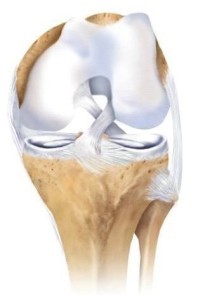ACL Surgery
You may have been told by your clinician that you need ACL surgery and are feeling confused or worried about what an ACL reconstruction is and how this will affect your life.
Rehabilitation plans may vary according to surgeon preferences and according to the exact procedure performed. The information provided here is therefore only a guide.
About the ACL
What is the ACL?
The anterior cruciate ligament (ACL) is one of the main restraining ligaments in the knee. It runs through the centre of the knee, from the back of the femur (thigh bone) to the front of the tibia (shin bone), and it acts as a link mechanism between the thigh and lower leg.
What does the ACL do?
The main function of the ACL is to stabilise the knee, especially during rotation, sidestepping, and pivoting movements.
This means that when the ACL is ruptured or torn, the tibia moves abnormally on the femur and comes out of joint, and the knee buckles. The main feeling is a sense of the knee giving way during twisting or pivoting movements, and a sense of not trusting the knee when turning.

The importance of the ACL
The ACL is the main stabiliser of the knee, and without it fast pivoting and twisting actions become difficult and result in giving way of the knee. It is hard to get back to pivoting type sports without a good ACL. In addition, repeated buckling or giving way of the knee can lead to secondary damage of the other important structures of the knee – namely the smooth bearing surface (articular cartilage) and the protective shim between the surfaces (meniscus or footballers cartilage).
Once these become damaged then there is much higher risk of later problems with the knee such as pain from wear and tear arthritis. Repeated giving way of the knee is therefore not good for the knee.
Why do I need to consider surgery to rebuild the ligament?
After knee injury the swelling and pain will settle, and it is usual to be able to return to walking and straight line running, even following a torn ACL. However, the ACL usually does not heal, and without the ACL it is difficult to trust the knee on rough ground or twisting movements. All too often the diagnosis can be delayed because the knee may recover for straight line activities, giving a false sense of security, but there is no control when returning to pivoting sports.
This can result in the knee giving way again and with repeated buckling there is a risk of further damaging the other key structures in the knee – hence the importance of preventing re-injury by making an early diagnosis.
What are the indications for surgery?
The main indication for ACL reconstruction, therefore, is symptomatic instability of the knee or a desire to compete in high risk activities.
There is no immediate rush to have surgery and it is appropriate to let the knee settle down following injury while a decision is made to consider surgery.
This should be discussed with the treating surgeon, and the risks and benefits can be discussed on an individual basis.
What happens in the future?
There is no hard evidence that reconstruction of the ACL reduces the incidence or progression of degenerative change (arthritis), but it is known that early stabilisation reduces the chance of damage to the meniscus (footballer’s cartilage). Although no long term-controlled studies are available, recent evidence suggests that knee wear and tear is much less when the meniscus is intact.
